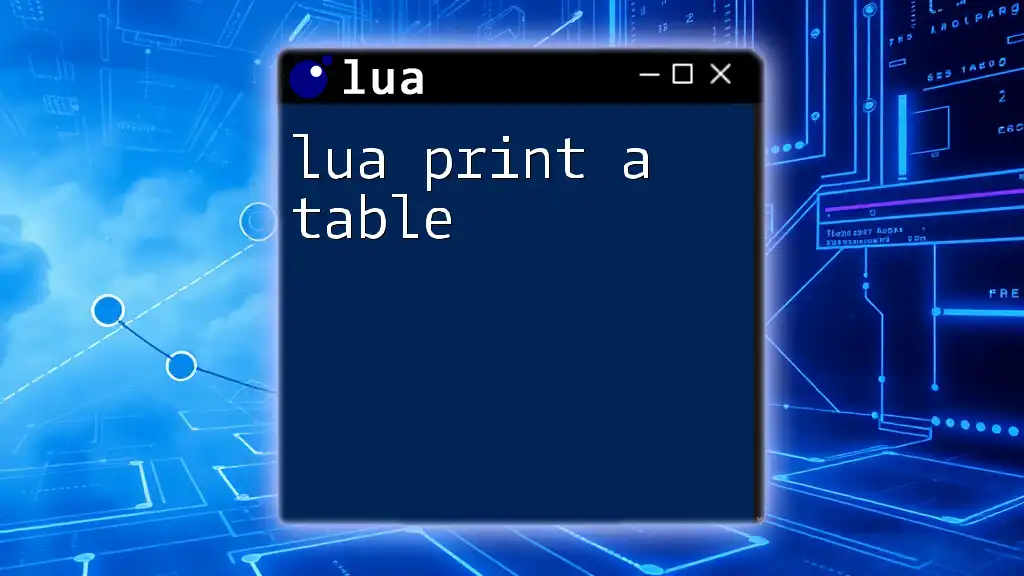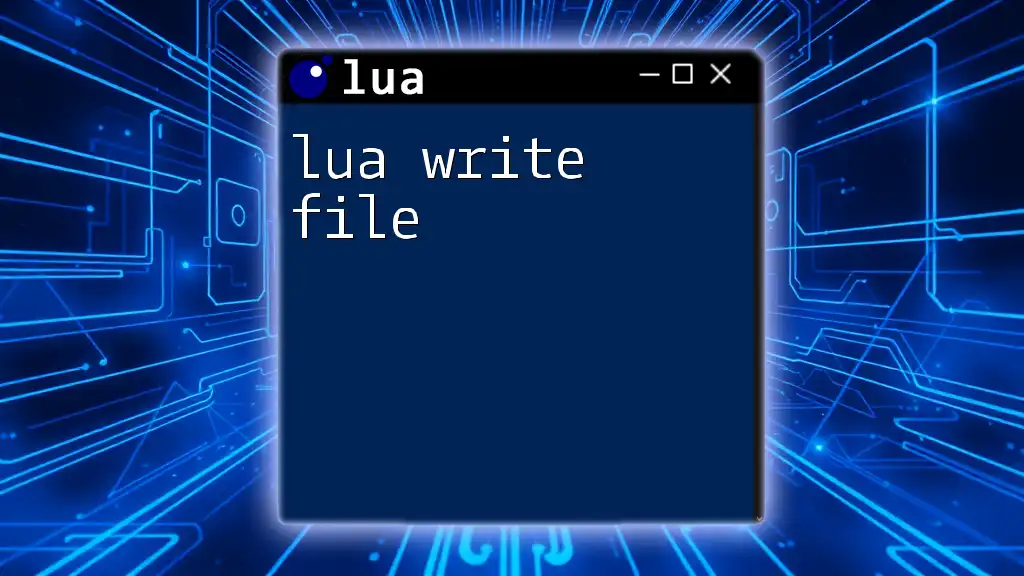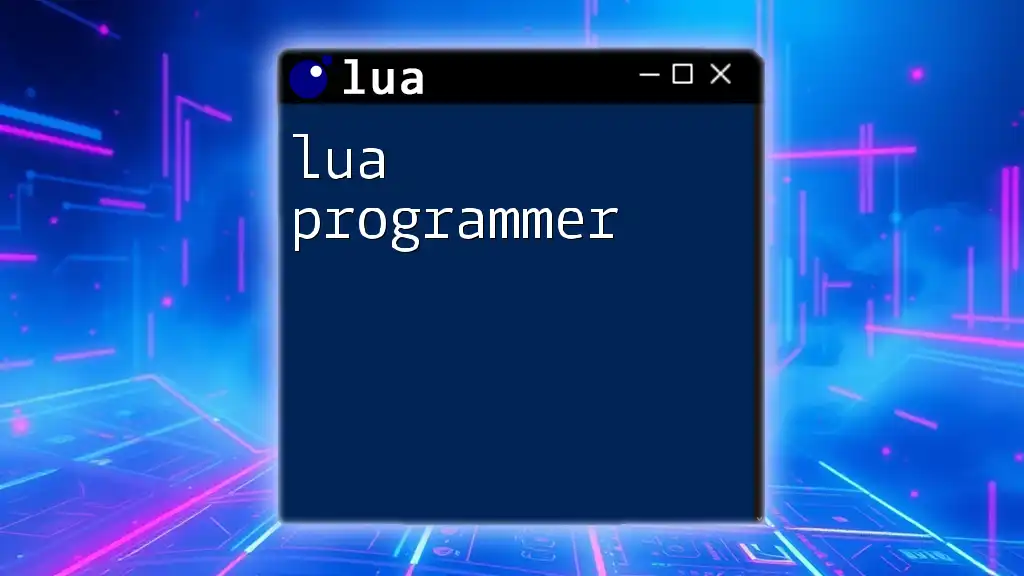In Lua, you can print the contents of a table by iterating through its keys and values using a simple loop. Here's a code snippet that demonstrates this:
local myTable = {name = "John", age = 30, city = "New York"}
for key, value in pairs(myTable) do
print(key .. ": " .. tostring(value))
end
Understanding Lua Tables
What is a Lua Table?
In Lua, a table is a versatile data structure that allows you to store different types of values, including numbers, strings, and functions. Unlike arrays in other languages, Lua tables can hold key-value pairs, which means you can create complex data structures. This versatility makes tables fundamental to Lua programming, allowing for efficient organization and manipulation of data.
Basic Table Structure
Creating a table in Lua is straightforward. It uses the following syntax:
myTable = {
name = "John",
age = 30,
hobbies = {"reading", "gaming", "coding"}
}
In this example, `myTable` contains three entries: `name`, `age`, and `hobbies`. Here, `hobbies` itself is a nested table, showcasing how tables can contain other tables, facilitating complex data structures.
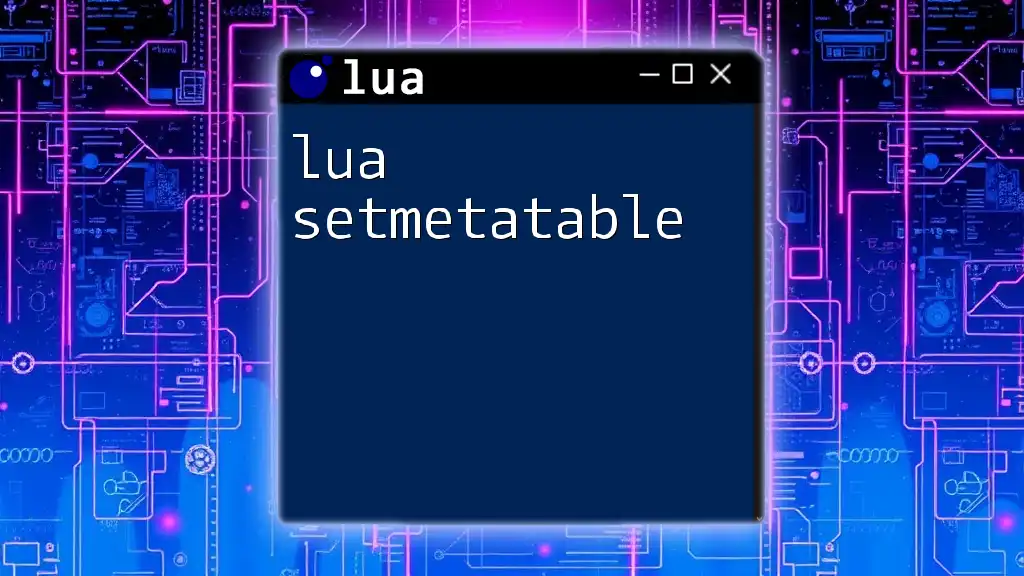
How to Print a Table in Lua
Using the `print` Function
At its core, the `print` function in Lua is designed for displaying output. However, using the `print` function directly with a table will not yield the desired results, as it simply prints the table's memory address, not its contents:
print(myTable)
To effectively utilize `print`, you will often need to manipulate its contents and print individual items.
Printing Individual Elements
Accessing specific elements in a table can be achieved by utilizing the key associated with that element. For instance:
print("Name: " .. myTable.name)
print("Age: " .. myTable.age)
This method yields clear output for `name` and `age`, presenting them in a readable format. However, if you want to print nested items (like the hobbies listed in another table), you would access them like this:
for i, hobby in ipairs(myTable.hobbies) do
print("Hobby " .. i .. ": " .. hobby)
end
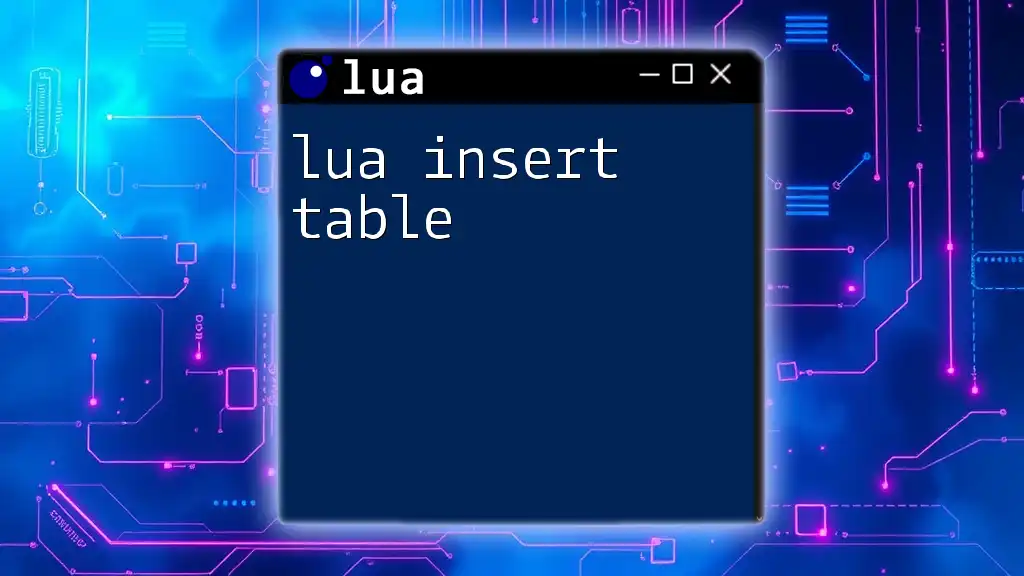
Advanced Table Printing Techniques
Using a For Loop
For a more comprehensive view of all elements within a table, the `for` loop can be used to iterate through each key-value pair. Here’s how you can do it:
for key, value in pairs(myTable) do
print(key .. ": " .. tostring(value))
end
This code will display every key in the table along with its corresponding value. It’s essential to utilize `tostring()` when dealing with non-string values, ensuring all data types are converted for accurate display.
Understanding the `ipairs` Function
When dealing with tables that you want to traverse in order, especially numeric lists, `ipairs` is a great choice. Unlike `pairs`, `ipairs` iterates only through the array part of a table, preserving the order. Here’s an implementation:
for index, hobby in ipairs(myTable.hobbies) do
print("Hobby " .. index .. ": " .. hobby)
end
This method guarantees that the printed hobbies remain in the order they were added to the table.

Techniques for Pretty Printing Tables
Implementing Custom Print Functions
To enhance readability, defining a custom function can make table printing much more manageable. This function can be tailored to present the data in a user-friendly format:
function printTable(t)
for k, v in pairs(t) do
print(k .. ": " .. tostring(v))
end
end
printTable(myTable)
This `printTable` function iterates through all keys in the table and prints them in a formatted way, making it easier to understand the contents.
Lua Table Dumping Techniques
In cases where you need a deeper representation of nested tables, a "dump" approach can be beneficial. This recursive function allows you to visualize the entire structure:
function dumpTable(t, level)
level = level or 1
for k, v in pairs(t) do
print(string.rep(" ", level) .. k .. ":")
if type(v) == "table" then
dumpTable(v, level + 2)
else
print(string.rep(" ", level + 2) .. tostring(v))
end
end
end
dumpTable(myTable)
The `dumpTable` function provides a hierarchical view of the table, offering insights into nested data structures, which can be crucial for debugging and understanding data.

Real-World Applications of Table Printing
Debugging with Table Printing
When you encounter issues in your Lua code, printing your tables can provide invaluable insight. By reviewing the content and structure of your tables, you can identify errors in data storage, wrong key accesses, or even determine if your logic needs adjustment. Utilizing table printing is a critical skill in a developer’s toolkit.
Data Visualization and Reporting
In scenarios involving data reporting or visualization, printed tables can clearly represent the information to the user. Whether displaying user data or summarizing operations, creating well-structured table outputs enhances both readability and comprehension.
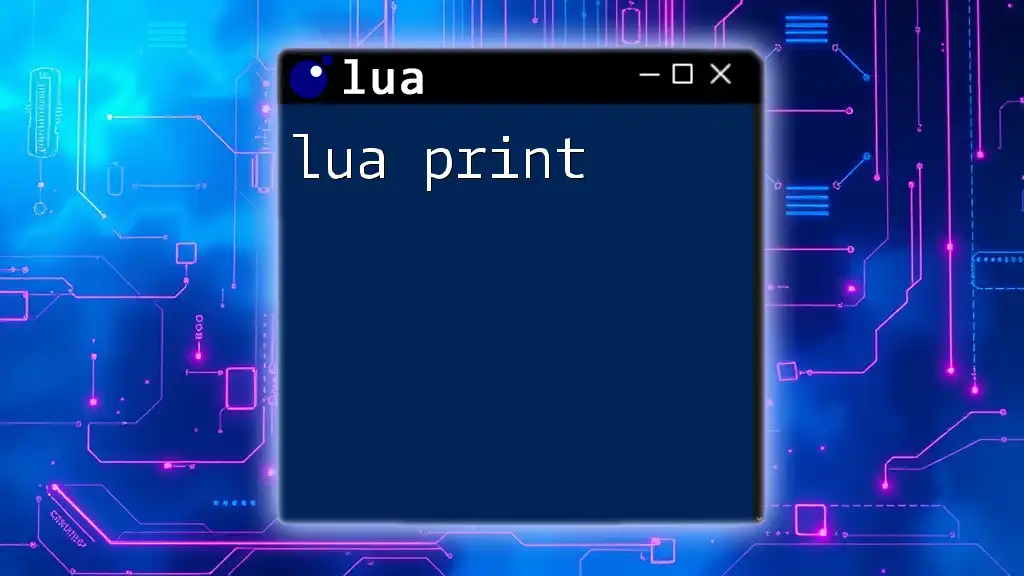
Best Practices for Printing Lua Tables
Using Descriptive Keys
As you create tables, opting for meaningful keys is crucial. Descriptive keys make your data more intuitive and understandable, helping other developers (or future you) quickly grasp what each value represents. For instance, use `employee_name` instead of just `name` to avoid ambiguity.
Avoiding Large Tables
While Lua can handle large tables, printing them entirely can become overwhelming. Instead, focus on printing summarized information or breaking down large tables into smaller sections. This ensures that the printed output is concise, facilitating easier debugging and review.

Conclusion
Mastering the art of lua print a table is essential for anyone looking to efficiently develop with Lua. By learning these techniques, you'll not only enhance your debugging abilities but also improve how you work with data structures in your applications. Practice these concepts, apply them in your projects, and watch as your proficiency with Lua grows.

